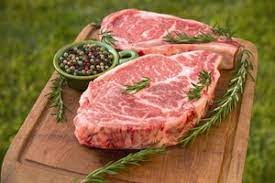Brazil: Beef Loses Competitiveness

To understand this scenario, it is necessary to analyze some indicators in detail. In November, over 603 million broilers were kept in Brazil, and in December the number exceeded 615 million.
The poultry industry's expectations were that Brazil would EXPORT more than 400,000 tons of chicken per month between January and March, which seems unlikely given the resumption of Ukrainian exports. The recent strengthening of the currency also weighed on the performance, impacting export earnings at the time of conversion. Domestic demand also slowed down at the start of the year. In this scenario, the seasonal component is of great importance. The first two months of the year are a period marked by reduced demand, given traditional expenses such as school supplies and municipal and state taxes.
That is, the Brazilian poultry industry starts 2023 with a large supply amid sluggish demand, especially in the domestic market. As a result, prices fall sharply, mainly in the wholesale market. The cost of animal feed is also currently a problem as corn and soybean meal prices remain high. Thus, the operating margin is negative in most of the country.
However, chicken has a big advantage over competing proteins. The chicken rearing cycle is shorter, so the sector can adjust to market challenges such as reduced demand and high costs that will come together in 2023.
Downsizing would be beneficial and would solve both problems. First, this reduction will reduce the consumption of corn and soybean meal, helping to mitigate the impact of rising costs. Later, this will lead to a reduction in the supply of chicken MEAT, which will lead to an adjustment in production according to real consumption in the first half of the year. However, no matter how fast this strategy is, it will only have a more obvious effect from April, and until then, most likely, the sector will continue to remain with negative margins.
The complex scenario of the chicken industry ultimately hinders the pricing of competing proteins. In an undercapitalized population, it makes sense that most consumers would opt for products that have less of an impact on average income, and this is where chicken comes in handy. Chicken is three times more affordable than beef and just over 1.17 times more affordable than pork.
Beef also opens the year with a sharp drop in wholesale prices, especially for beef halves. Between December and January, there was a decline of more than 8%, with an average forequarter price in January of BRL 14.21 per kilogram. The rear end has fallen in value by just over 5.3%, quoting at BRL 20.10 at the end of January. Pork carcasses showed an improvement in prices compared to December by BRL 11.22 per kilogram, but a price decrease at the end of January is already evident, given the scenario for other meat markets.
2023 has started off with serious challenges for the meat industry. In order to balance the accounts, it is necessary to understand demand, mainly related to exports, and make adjustments to production to adjust to the current cost structure. In the case of poultry production, it is easier to cut production, as other sectors will have more difficulties in this process.
Read together with it:
- К Новому году говядина может подорожать на 5-10% из-за изменений в животноводствеЭто обусловлено тем, что многие фермерские хозяйства переключаются на производство свинины и птицы, что приводит к снижению объемов говядины. Одновременно наблюдается рост затрат на содержание скота. В то же время, Станислав Богданов, представитель розничной торговли, утверждает, что на рынке достаточно мяса и цены контролируются. Он также отметил, что в прошлом году цена говядины выросла на 4,3%....
- США: Несмотря на пошлины, экспорт свинины в Китай в июле остался стабильнымПовышенная пошлина (составлявшая 37% в это же время в прошлом году) повлияла на стоимость экспорта, которая снизилась на 13% до 77,6 млн долларов США. С января по июль экспорт в Китай был на 16% ниже прошлогоднего по объему (218 005 тонн) и на 17% ниже по стоимости (513,3 млн долларов США). Это было обусловлено главным образом резким падением экспорта в апреле и мае, когда американская свинина под...




























































